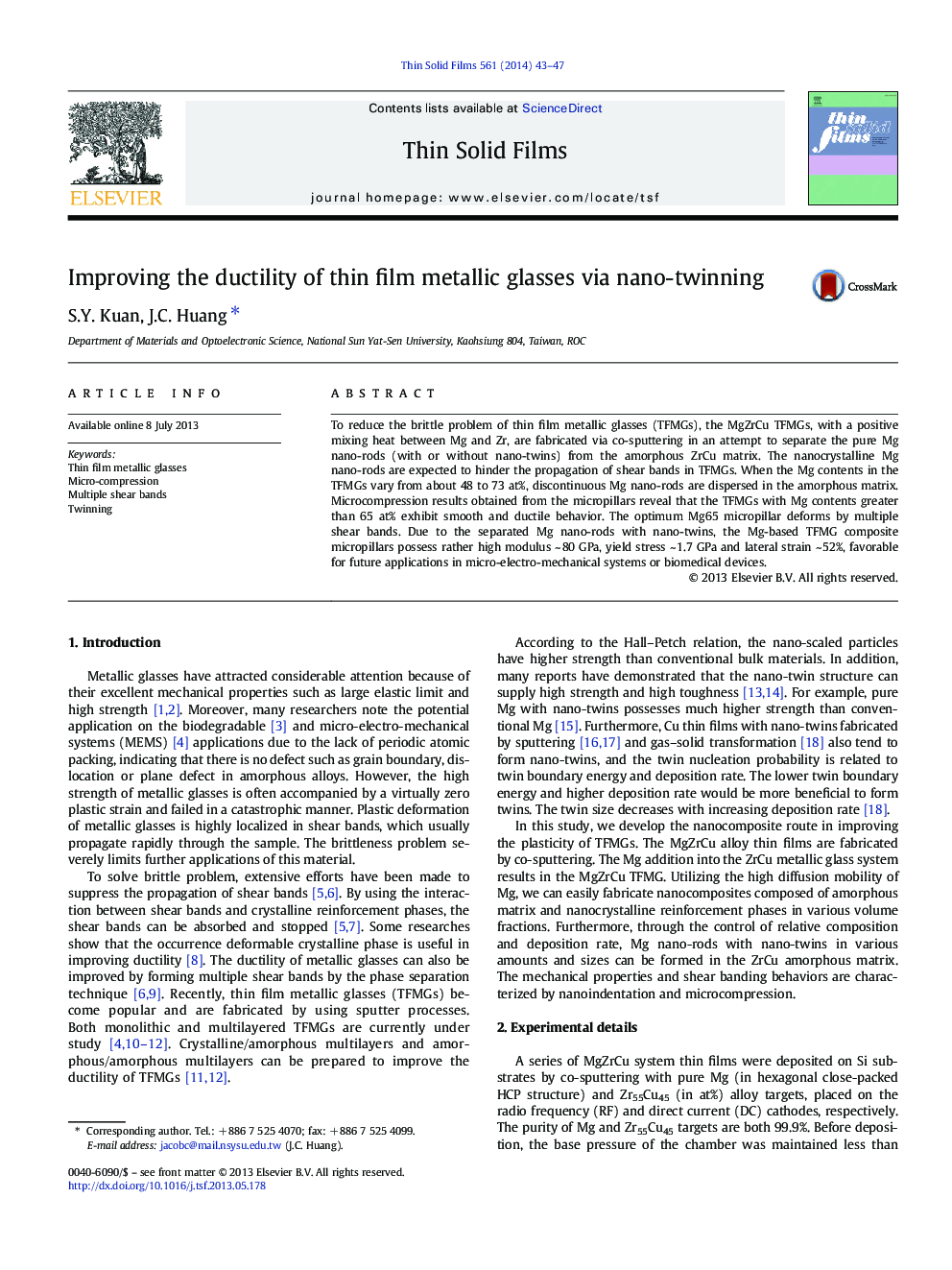| Article ID | Journal | Published Year | Pages | File Type |
|---|---|---|---|---|
| 1665408 | Thin Solid Films | 2014 | 5 Pages |
•Sputtered MgZrCu thin film metallic glasses and composites are prepared.•Pure Mg nano-rods with or without nano-twins are formed in amorphous ZrCu matrix.•Mg-based composite micropillars possess higher strength and plasticity.
To reduce the brittle problem of thin film metallic glasses (TFMGs), the MgZrCu TFMGs, with a positive mixing heat between Mg and Zr, are fabricated via co-sputtering in an attempt to separate the pure Mg nano-rods (with or without nano-twins) from the amorphous ZrCu matrix. The nanocrystalline Mg nano-rods are expected to hinder the propagation of shear bands in TFMGs. When the Mg contents in the TFMGs vary from about 48 to 73 at%, discontinuous Mg nano-rods are dispersed in the amorphous matrix. Microcompression results obtained from the micropillars reveal that the TFMGs with Mg contents greater than 65 at% exhibit smooth and ductile behavior. The optimum Mg65 micropillar deforms by multiple shear bands. Due to the separated Mg nano-rods with nano-twins, the Mg-based TFMG composite micropillars possess rather high modulus ~ 80 GPa, yield stress ~ 1.7 GPa and lateral strain ~ 52%, favorable for future applications in micro-electro-mechanical systems or biomedical devices.
